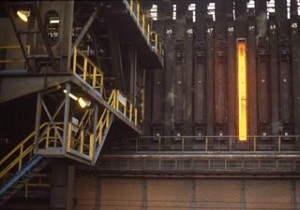
In America in 2012, according to the American Lung Association (ALA), the good news is the air in much of the country has gotten cleaner. Credit improvement to Clean Air Act standards. The not-so-good news, on the other hand, is that since the ALA released its first State of the Air report in 2000, in other places polluted air at unhealthful levels persists and in some areas pollution has grown worse.
American Lung Association’s State of the Air report for 2012 bears this out.
In an April 25, 2012 press release, ALA President and CEO Charles D. Connor insisted “real and steady progress in cutting dangerous pollution from the air we breathe” was made, but he said also, “… America’s air quality standards are woefully outdated, and unhealthy levels of air pollution still exist across the nation, putting the health of millions of Americans at stake.”
Renee Schoof of McClatchy Newspapers, meanwhile, in Oct. ’09 in “Report looks at hidden health costs of energy production” noted that a National Research Council (NRC) report estimated the yearly hidden costs associated with early mortality and health impacts to the thousands of Americans so-affected, and in this case all attributable to fossil fuel use, totaled $120 billion. Roughly half – $62 billion – was tied to electricity production from the burning of coal, according to Schoof.
Transportation’s contribution to that total annual sum weighed heavily as well – an estimated $50 billion.
The year-long NRC study, “looked at many costs of energy production and the use of fossil fuels that aren’t reflected in the price of energy. The $120 billion sum was the cost to human health from U.S. electricity production, transportation and heating in 2005, the latest year with full data,” Schoof wrote, adding also, “The report says it’s impossible to put a monetary amount on all the hidden costs of energy, in some cases because of a lack of information but also because the study had limited time and resources. It focused on the costs of air pollution on health.”
Nitrogen oxide, sulfur dioxide and particle emissions were the key pollutants looked at.
Smokestack scrubbers
“The best use of the information is to compare it on a plant-by-plant basis with the cost of installing and running scrubbers to reduce the pollution, said Maureen Cropper, a professor of economics at the University of Maryland and the vice chairman of the 19-member report committee,” the McClatchy reporter wrote.
Very clean plants presently utilizing scrubbers exist, reported Schoof in citing Cropper who pointed out further that implementing additional controls on those plants “‘would not be worth the benefits.’” On the other hand, “‘there are also dirtier plants where the health benefits would outweigh the cost of pollution controls.’”
A toll too high
Daniel Greenbaum, another panel member and president of the nonprofit Health Effects Institute in Boston which “researches the effects of air pollution on health” put the total number of premature deaths at an estimated 18,000 to 19,000 yearly.
As noted in the National Research Council report, “The panel of scientists, engineers, economists, and law and policy experts based its findings on presentations by experts, peer-reviewed scientific literature, and federal reports and databases,” Schoof wrote.
Published by Alan Kandel
Comments are closed.